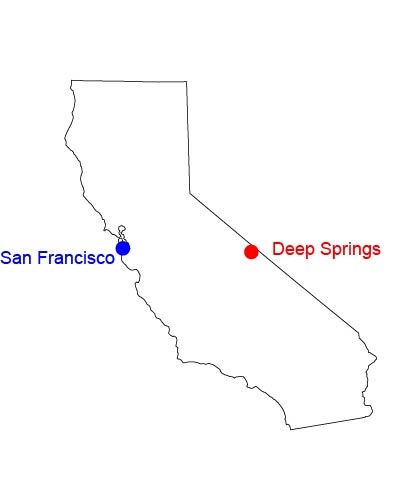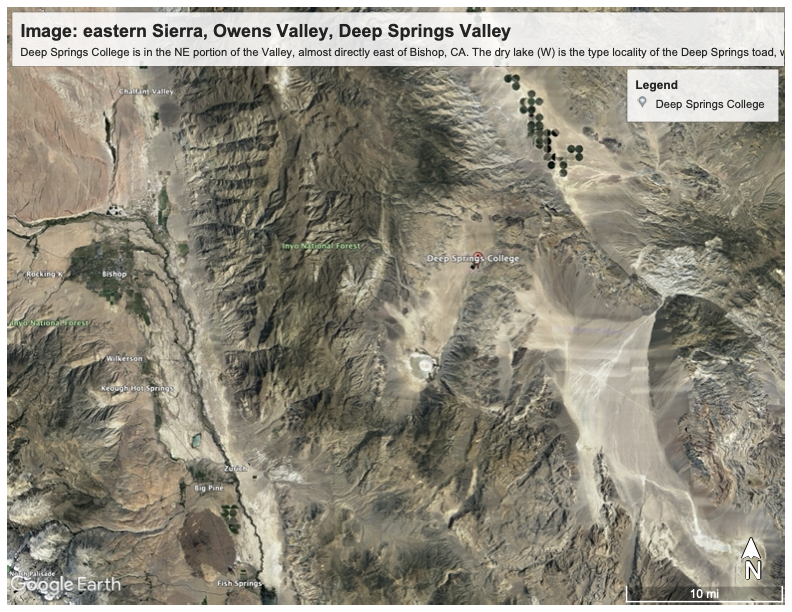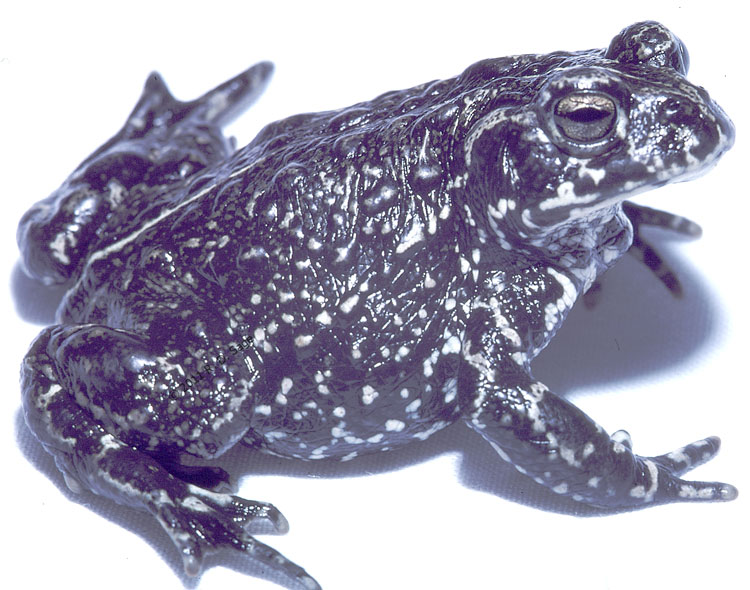Part Two – Deep Springs College
Background. Deep Springs College is in an isolated, high-desert valley in far eastern California. Imagine traveling directly east of San Francisco until you reach the Nevada border. Then backtrack ~ 15 miles, and you’ve landed in Deep Springs Valley – roughly the size of Manhattan.
And you are in the middle of nowhere. Other than the College, the only inhabitants in the valley are the crew of a small highway maintenance station. The nearest village to the west is Big Pine in Owens Valley. It likely had fewer than 1000 inhabitants during my time in the Valley, and it is 28 miles away across the White Mountains. The nearest village to the east was muchs further away. [Note: Lida Junction in Nevada (a highway intersection 37 miles by road from Deep Springs) was once (1967-2004) the home of the infamous Cottontail Ranch, a legal brothel in Nevada.]
The Valley itself about 12 by 4 miles long, and is surrounded by mountains. The Valley floor is at ~5000 ft. elevation. A saline lake lies near the south-west corner. The Valley receives only about 5 inches of rain. In summer, daytime temperatures often exceed 100 °F.
I learned about Deep Springs from my father. When he was a grad student in geology at UC Berkeley, one of his fellow grad students had gone to Deep Springs.
Deep Springs is the smallest non-sectarian college in the US, and had only about 20 students (then all male) and three or four faculty. We all had full scholarships – so no tuition and no fees for room and board! Deep Springs covers the first two years of college, but because of the labor requirement (see below), most students at that time took three years to finish.
Deep Springs attracts top students. Over 95% eventually completed a Bachelor’s degree, and over half earned graduate degrees. According to Wikipedia, the alumni (though few in number) have become Rhodes and Truman Scholars, two Pulitzer Prize winners, three MacArthur Fellows, and winners of an Emmy and Lawrence Award, plus numerous academics and congressmen.


Applying to Deep Springs was a chore. We had to submit multiple essays, book reports, and personal stories. I’m sure I wrote more essays for that application than I had written in my entire life.
Deep Springs College was founded in 1917 by L. L. Nunn, who – with George Westinghouse – pioneered the use of electrical power in mining in Colorado. Nunn made a fortune, but he was challenged to teach the developing technology to the local men, most of whom had little or no formal education. In the process, Nunn became fascinated with education. Deep Springs College was one of his educational experiments.
Nunn founded Deep Springs on three pillars of student experience: education, labor, and self-governance. Nunn believed these three pillars were necessary to prepare young men for lives of leadership and service.
Classes were small. My largest class was French, with ~8 students. My smallest was expository writing – just me! Essentially, we were tutored.
Deep Springs is also a working cattle ranch and alfalfa farm. All students worked at least 20 hours each week on the ranch. Job assignments changed quarterly and could involve laundry, ‘boarding house’ (kitchen duties), library, irrigation, dairy, chickens, and best of all – cowboy.
Nunn knew that the labor program forces students to take responsibility, as they must keep the ranch and its community working smoothly (a small professional staff made sure we didn’t screw up too much). However, the labor requirement meant that students typically took three years to accumulate two years of college credit. But because most of us had skipped our senior year in high school, we stayed in step with our high school classmates.
Self-governance is another pillar, and it is something few college students experience. But Deep Springs students have considerable power and – in many ways – ‘run the college.’ We met weekly to discuss and decide issues and policies, ranging from immediate student or ranch challenges, voicing recommendations for student admissions and retention and on faculty hiring and retention.
When I was there, Deep Springs had only three rules (no smoking, no drinking or drugs, and no outside social contacts). Years later, the students decided to allow smoking. The anarchist in me supports their choice, but I nonetheless find it out of character for the spirit of Deep Springs.
Deep Springs Valley was home not only to the College but also to the Deep Springs toad, Anaxyrus [Bufo] exsul. This little black toad is found only in the Valley and has one of the most restricted geographic range of any amphibian. George S. Myers described it as a new species in 1942 and named it Bufo exsul. [Note: “exsul” is Latin for “exile” or “castaway,” which is appropriate not only for these toads but also for the students.]
I was disinterested in biology while I was a student in the Valley. In fact, I remember being puzzled as to why some herpetologists would travel hundreds of miles just to see our little black toads. Different strokes…

The 2+ years I spent in the Valley (September 1961 to December 1963) were formative for me. The sketches below outline some people and experiences that influenced and still influence me.
Deep Springs was all-male from its inception in 1917 until 2018, when it became co-ed. The Deep Springs experience will now be different but will remain an educational experiment in progress.